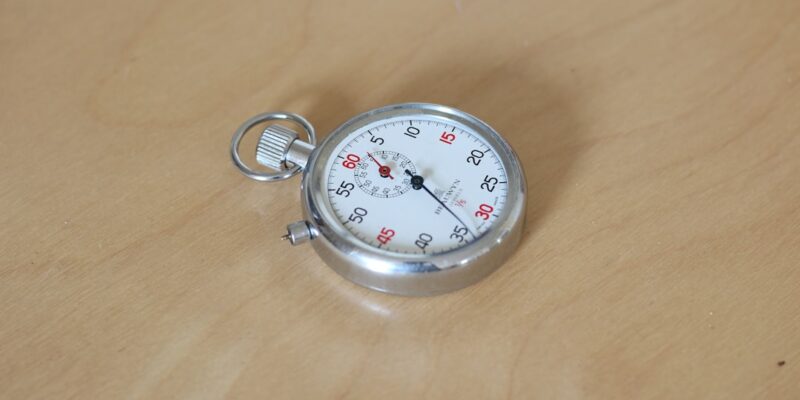
Interval Walking: A Powerful Tool for Fat Loss
Interval walking is a popular exercise technique that has gained attention for its effectiveness in promoting weight loss. This article will provide a comprehensive overview of interval walking, including what it is, how it works for fat loss, and the science behind its benefits. Additionally, we will discuss how to get started with interval walking, compare it to traditional cardio exercises, and explore its role in a comprehensive weight loss program. We will also delve into the mental and emotional benefits of interval walking, strategies for fitting it into a busy schedule, modifications for different fitness levels, and the importance of consistency and persistence for long-term weight loss success.
Key Takeaways
- Interval walking is a form of exercise that involves alternating periods of high-intensity walking with periods of low-intensity walking.
- Interval walking can help with fat loss by increasing the number of calories burned during and after exercise, as well as improving cardiovascular health and insulin sensitivity.
- To get started with interval walking, it’s important to warm up properly, choose a comfortable pace, and gradually increase the intensity and duration of your intervals over time.
- Interval walking may be more effective for fat loss than traditional steady-state cardio, as it can help you burn more calories in less time and improve your body’s ability to use fat for fuel.
- Interval walking can be a valuable component of a comprehensive weight loss program, providing both physical and mental benefits and helping to improve overall health and well-being.
What is Interval Walking and How Does it Work for Fat Loss?
Interval walking is a form of exercise that involves alternating between periods of high-intensity walking and periods of low-intensity walking or rest. The high-intensity intervals are typically shorter in duration but more intense, while the low-intensity intervals allow for recovery. This pattern of alternating intensities helps to increase the overall intensity of the workout and maximize calorie burn.
The concept behind interval walking for fat loss is based on the principle of high-intensity interval training (HIIT). HIIT has been shown to be an effective method for burning calories and promoting weight loss. By incorporating short bursts of high-intensity exercise into your walking routine, you can elevate your heart rate and increase your metabolic rate. This leads to a greater calorie burn during and after your workout, which can contribute to fat loss over time.
The Science Behind Interval Walking and Its Benefits for Weight Loss
Numerous research studies have explored the effects of interval walking on weight loss. One study published in the Journal of Obesity found that interval walking was more effective than continuous moderate-intensity walking for reducing body fat percentage and waist circumference in overweight women. Another study published in the International Journal of Obesity found that interval walking was associated with greater improvements in cardiovascular fitness and insulin sensitivity compared to continuous moderate-intensity walking.
In addition to its effects on weight loss, interval walking offers several other benefits. It can improve cardiovascular health, increase muscle strength and endurance, enhance mood and mental well-being, and boost overall fitness levels. Interval walking also provides a time-efficient workout option, as it allows you to burn more calories in less time compared to traditional cardio exercises.
How to Get Started with Interval Walking: Tips and Tricks
| Metrics | Description |
|---|---|
| Interval Walking | A form of exercise that involves alternating periods of high-intensity walking with periods of low-intensity walking or rest. |
| Benefits | Improves cardiovascular health, increases endurance, burns calories, reduces stress, and improves mood. |
| Duration | Start with 10-15 minutes and gradually increase to 30-45 minutes per session. |
| Frequency | 3-5 times per week. |
| Intensity | Alternate between high-intensity walking (70-85% of maximum heart rate) and low-intensity walking or rest. |
| Warm-up and Cool-down | Start with a 5-minute warm-up of low-intensity walking and end with a 5-minute cool-down of low-intensity walking or stretching. |
| Equipment | Comfortable walking shoes, breathable clothing, and a water bottle. |
| Challenges | May be difficult for beginners or those with certain health conditions. Consult with a doctor before starting. |
If you’re new to interval walking, it’s important to start slowly and gradually increase the intensity and duration of your intervals. Begin by incorporating short bursts of high-intensity walking into your regular walking routine. For example, you could walk at a brisk pace for 1 minute, then slow down to a comfortable pace for 2 minutes. Repeat this pattern for a total of 20-30 minutes.
As you become more comfortable with interval walking, you can increase the duration of your high-intensity intervals and decrease the duration of your low-intensity intervals. You can also experiment with different types of intervals, such as incline intervals or speed intervals, to challenge your body in different ways.
To create an interval walking workout plan, consider the following factors:
1. Frequency: Aim to incorporate interval walking into your routine at least 3-4 times per week.
2. Duration: Start with shorter intervals (e.g., 1 minute high-intensity, 2 minutes low-intensity) and gradually increase the duration as you progress.
3. Intensity: During your high-intensity intervals, aim to walk at a pace that feels challenging but sustainable. You should be able to maintain proper form and breathe comfortably.
4. Rest and recovery: Allow yourself adequate rest and recovery between intervals to prevent overexertion and reduce the risk of injury.
Interval Walking vs. Traditional Cardio: Which is More Effective for Fat Loss?
When it comes to fat loss, both interval walking and traditional cardio exercises can be effective. However, interval walking offers some unique advantages that make it a popular choice for many individuals.
Interval walking has been shown to be more time-efficient than traditional cardio exercises. By incorporating short bursts of high-intensity exercise into your walking routine, you can achieve a greater calorie burn in a shorter amount of time. This is especially beneficial for individuals with busy schedules who may not have the time or desire to spend hours at the gym.
Interval walking also provides a more varied and engaging workout compared to traditional cardio exercises. The alternating intensities keep your body and mind engaged, making the workout more enjoyable and less monotonous. This can help to increase adherence and motivation, which are important factors for long-term weight loss success.
The Role of Interval Walking in a Comprehensive Weight Loss Program
Interval walking can be a valuable component of a comprehensive weight loss program. While exercise alone is not sufficient for significant weight loss, it plays a crucial role in creating a calorie deficit and improving overall health and fitness.
In addition to interval walking, a comprehensive weight loss program should also include a balanced and nutritious diet, strength training exercises, and lifestyle modifications. A combination of these components can help to optimize fat loss, preserve muscle mass, improve body composition, and enhance overall well-being.
When incorporating interval walking into your weight loss program, it’s important to consider your individual goals, preferences, and physical capabilities. Consult with a healthcare professional or certified fitness trainer to develop a personalized plan that suits your needs.
How Interval Walking Can Help You Burn More Calories in Less Time
One of the key benefits of interval walking is its ability to help you burn more calories in less time compared to traditional cardio exercises. The high-intensity intervals elevate your heart rate and increase your metabolic rate, leading to a greater calorie burn during and after your workout.
Interval walking also has a unique effect on your body’s energy systems. During the high-intensity intervals, your body relies primarily on carbohydrates for fuel. However, during the low-intensity intervals, your body switches to using fat as its primary fuel source. This shift in energy utilization can contribute to fat loss over time.
To maximize calorie burn during interval walking, focus on maintaining proper form and intensity during the high-intensity intervals. Engage your core, swing your arms, and take long strides to increase the intensity of your workout. Additionally, consider incorporating incline intervals or speed intervals to further challenge your body and increase calorie burn.
The Mental and Emotional Benefits of Interval Walking for Weight Loss
Interval walking not only offers physical benefits but also provides several mental and emotional benefits that can contribute to weight loss success. Regular exercise, including interval walking, has been shown to improve mood, reduce stress and anxiety, boost self-esteem, and enhance overall mental well-being.
Interval walking allows you to disconnect from the stresses of daily life and focus on yourself and your health. It provides an opportunity for mindfulness and self-reflection, which can help to reduce negative thoughts and improve mental clarity. The release of endorphins during exercise also contributes to a sense of happiness and well-being.
Additionally, interval walking can be a social activity that allows you to connect with others who share similar goals and interests. Joining a walking group or participating in organized walking events can provide a sense of community and support, which can be motivating and encouraging throughout your weight loss journey.
Interval Walking for Busy People: How to Fit it into Your Schedule
One of the challenges many people face when trying to incorporate exercise into their daily routine is finding the time. However, interval walking offers a time-efficient workout option that can be easily incorporated into a busy schedule.
To fit interval walking into your schedule, consider the following tips:
1. Prioritize: Make exercise a priority and schedule it into your day, just like any other important appointment or commitment.
2. Break it up: If you don’t have a solid block of time for a full workout, break it up into smaller intervals throughout the day. For example, you could do three 10-minute interval walking sessions instead of one 30-minute session.
3. Multitask: Look for opportunities to incorporate interval walking into your daily activities. For example, you could walk to work or school instead of driving, take the stairs instead of the elevator, or walk during your lunch break.
4. Be flexible: Be open to adjusting your schedule and finding creative ways to fit in exercise. This may require some trial and error, but with persistence and consistency, you can find a routine that works for you.
Interval Walking for All Fitness Levels: Modifications and Progressions
Interval walking can be modified to accommodate individuals of all fitness levels, from beginners to advanced exercisers. It’s important to listen to your body and make adjustments as needed to ensure a safe and effective workout.
For beginners or individuals with physical limitations, consider the following modifications:
1. Reduce intensity: Start with shorter high-intensity intervals or decrease the speed or incline during the high-intensity intervals.
2. Increase rest periods: Allow for longer rest periods between intervals to ensure adequate recovery.
3. Gradual progression: Gradually increase the duration and intensity of your intervals as you become more comfortable and fit.
For advanced exercisers looking to challenge themselves, consider the following progressions:
1. Increase intensity: Increase the speed or incline during the high-intensity intervals to further elevate your heart rate.
2. Decrease rest periods: Shorten the rest periods between intervals to increase the overall intensity of your workout.
3. Incorporate additional exercises: Combine interval walking with other exercises, such as bodyweight exercises or resistance training, to create a more challenging and varied workout.
The Importance of Consistency and Persistence in Interval Walking for Long-Term Weight Loss Success
Consistency and persistence are key factors for long-term weight loss success with interval walking. While it’s important to start slowly and gradually increase the intensity and duration of your intervals, it’s equally important to stay consistent with your workouts and persist through any challenges or setbacks.
Consistency is important because it allows your body to adapt to the demands of interval walking and maximize the benefits. Regular exercise helps to build endurance, improve cardiovascular fitness, increase muscle strength, and enhance overall fitness levels. By making interval walking a regular part of your routine, you can create a habit that becomes easier to maintain over time.
Persistence is important because weight loss is not always linear or immediate. There may be times when you don’t see the scale move or when you face obstacles that make it difficult to stick to your routine. However, by staying persistent and committed to your goals, you can overcome these challenges and continue making progress.
To stay consistent and persistent with interval walking, consider the following tips:
1. Set realistic goals: Set achievable goals that are specific, measurable, attainable, relevant, and time-bound (SMART). This will help to keep you motivated and focused on your progress.
2. Find accountability: Find a workout buddy or join a walking group to hold yourself accountable and stay motivated.
3. Track your progress: Keep a record of your workouts, including the duration, intensity, and any modifications or progressions. This will help you see how far you’ve come and provide motivation to keep going.
4. Celebrate milestones: Celebrate your achievements along the way, whether it’s reaching a certain distance or completing a certain number of intervals. Rewarding yourself for your hard work can help to maintain motivation and momentum.
Interval walking is a highly effective exercise technique for weight loss that offers numerous benefits for both physical and mental well-being. By incorporating short bursts of high-intensity walking into your routine, you can increase calorie burn, improve cardiovascular fitness, build muscle strength, and enhance overall fitness levels. Interval walking can be easily modified to accommodate individuals of all fitness levels and can be incorporated into a comprehensive weight loss program.
To get started with interval walking, start slowly and gradually increase the intensity and duration of your intervals. Make interval walking a regular part of your routine and stay consistent and persistent with your workouts. Remember to listen to your body, make adjustments as needed, and celebrate your achievements along the way. With dedication and perseverance, interval walking can be a powerful tool for achieving long-term weight loss success. So lace up your shoes, hit the pavement, and start reaping the benefits of interval walking today!
FAQs
What is interval walking?
Interval walking is a form of exercise that involves alternating periods of high-intensity walking with periods of low-intensity walking or rest.
How does interval walking help with fat loss?
Interval walking can help with fat loss by increasing the number of calories burned during and after exercise. The high-intensity intervals increase the body’s metabolic rate, which can lead to greater fat burning.
What are the benefits of interval walking?
Interval walking can improve cardiovascular health, increase endurance, and help with weight loss. It can also be a low-impact form of exercise that is easier on the joints than running or other high-impact activities.
How often should I do interval walking?
The frequency of interval walking depends on individual fitness levels and goals. It is recommended to start with 2-3 sessions per week and gradually increase to 4-5 sessions per week.
How long should each interval be?
The length of each interval depends on individual fitness levels and goals. A common interval length is 30 seconds of high-intensity walking followed by 60 seconds of low-intensity walking or rest. However, intervals can be adjusted to be shorter or longer depending on individual needs.
What should I wear for interval walking?
It is recommended to wear comfortable, breathable clothing and supportive shoes with good traction. It is also important to dress appropriately for the weather and bring water to stay hydrated during exercise.
Is interval walking suitable for beginners?
Interval walking can be suitable for beginners, but it is important to start slowly and gradually increase intensity and duration. It is also recommended to consult with a healthcare professional before starting any new exercise program.


















